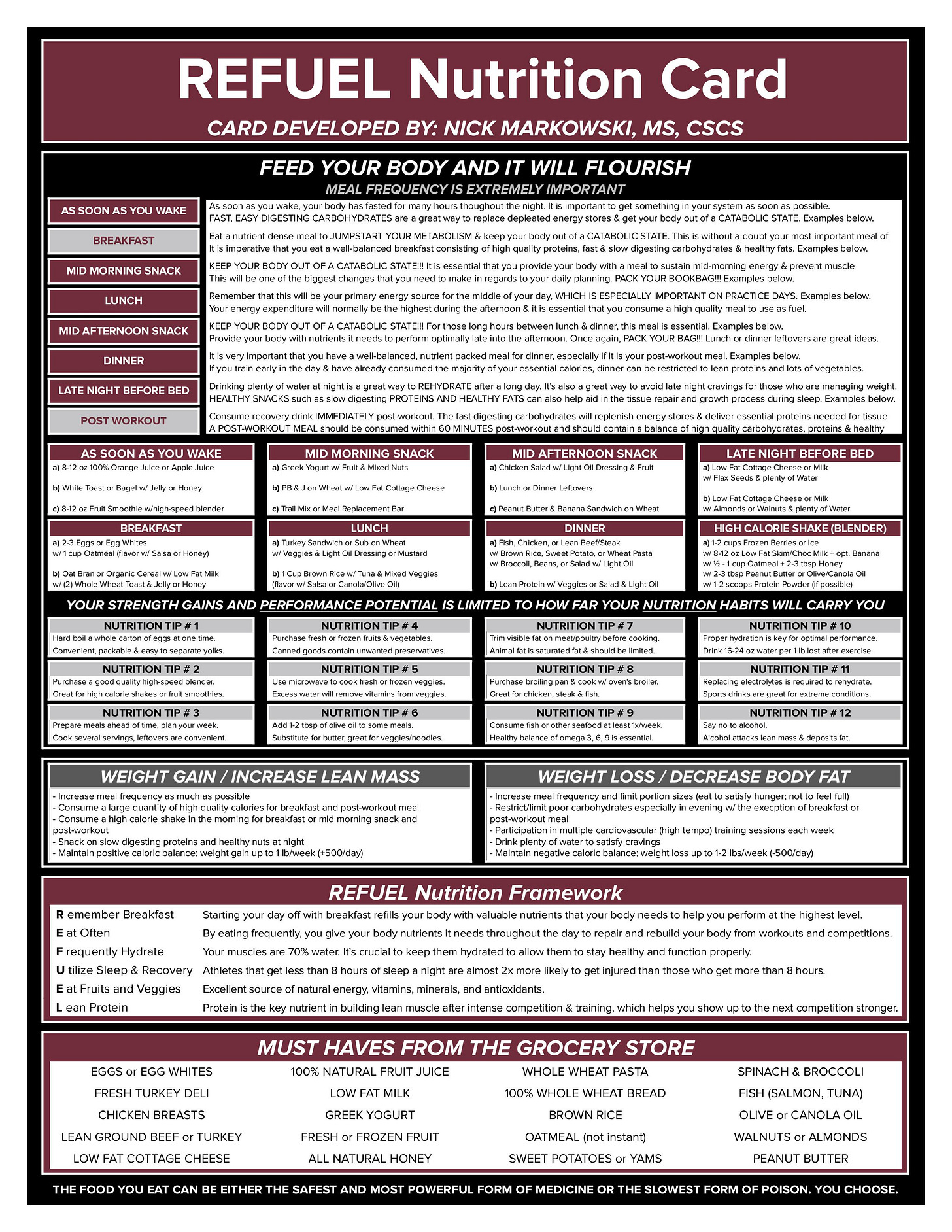Performance Fueling Questions: Tackling the Biggest Questions in Nutrition
#28 – Strength & Speed Coaching – Pursuing Your Best ⚡
You’ve taught the basics. You’ve introduced habits. You’ve started the conversation.
But the questions are still coming:
“Is fast food really that bad?”
“Should I take protein shakes?”
“What’s the best post-workout meal?”
“Do I need to count my calories or track macros?”
If you coach high school athletes, you’ve heard these. And you know that the wrong answer—or an unclear one—can set a poor habit in motion.
That’s what this newsletter is all about: cutting through the noise and helping athletes make real-life nutrition decisions with clarity, confidence, and context.
Let’s answer the big ones.
1. Is fast food okay during the season?
Short answer: Sometimes—but it can’t be your foundation.
We get it. Athletes are busy, food options are limited, and fast food is often convenient. But that doesn’t mean it should be the default.
How to coach it:
Teach about better choices. Grilled chicken > fried. Water > soda. Apple slices > fries.
Frame it as a fuel choice. Fast food won’t ruin everything—but if it’s your regular go-to, performance will suffer.
Encourage balance. If they grab fast food once a week, help them tighten up breakfast, snacks, and hydration to offset it.
⮕ Fast food is okay once in a while, but don’t expect fast food to fuel elite performance.
2. Should I take protein shakes?
Short answer: Food first—supplements second.
Protein shakes can be helpful, especially after a lift or practice when athletes don’t have access to a full meal. But they shouldn’t be the first option.
How to coach it:
Use them when needed. Post-practice, post-game, or between events when food isn’t realistic.
Prioritize complete meals. Encourage chicken, eggs, yogurt, or string cheese as first choices.
Teach label literacy. Look for NSF Certified or Informed Choice products if athletes are shopping for shakes.
⮕ Shakes are a tool, not a magic shortcut. Whole foods build muscle—shakes help when time’s tight.
3. Do I need to track my macros or calories?
Short answer: Probably not.
Most high school athletes don’t need to track their macros—they need to build consistent habits and understand the basics.
How to coach it:
Focus on frequency. Are they eating breakfast? Fueling before and after training? Getting protein at every meal?
Teach food types. Help them understand carbs, proteins, fats, and what whole foods look like.
Use the plate model. Half fruits/veggies, quarter protein, quarter carbs—keep it simple.
⮕ You don’t need to track everything. You need to eat enough of the right things, consistently.
4. What’s the best post-workout meal?
Short answer: A mix of protein and carbs—ASAP.
Post-workout nutrition helps replenish glycogen, rebuild muscle, and jumpstart recovery.
How to coach it:
Timing matters. Encourage a snack or shake within 30–60 minutes.
Include both macros. Protein helps repair; carbs refuel energy stores.
Promote easy options. Chocolate milk, PB&J, Greek yogurt + granola, protein bar + banana.
⮕ The best post-workout meal is the one that gets in your body quickly and checks the boxes: carbs + protein + hydration.
5. Can I eat the same as my friends and still perform well?
Short answer: Maybe—but it depends on your goals.
Most high schoolers aren’t thinking about performance. If you are, your habits might need to look different.
How to coach it:
Make it personal. Help them connect their eating with how they want to play, feel, and recover.
Avoid guilt or shame. It’s not about “good” or “bad”—it’s about what serves them best.
Normalize the difference. Elite athletes fuel differently. That’s okay. That’s what sets them apart.
⮕ Your goals shape your choices. If your friends aren’t training like you, don’t eat like them either.
Bonus Tip: Answer the Question Behind the Question
Sometimes athletes don’t need more facts—they need a coach who’ll meet them where they’re at.
If they ask about fast food, they might need help with a week could really look like.
If they ask about shakes, they might need a solution for post-practice nutrition.
If they ask about macros, they might be feeling overwhelmed by social media info.
Start by listening. Then guide them toward better patterns, not perfection.
Helpful Resource…
Here is an awesome resource from Nick Markowski, MS, CSCS who was one of my strength coaches at Northwest Missouri State University. He did a ton of awesome work centered around nutrition for all the Bearcat student-athletes.
Download a PDF version here ⤵
What’s Next?
We’ve covered a lot in this four-part REFUEL series:
Why fueling matters for Strength & Speed
How to build habits that stick
What recovery really looks like
And how to answer athletes’ toughest nutrition questions
Next, we’ll hop into a brand-new four-part series on Plyometrics—how to teach them, progress them, and program them with purpose.
You’ll get a practical breakdown of:
Foundational jumping mechanics
How to use plyos year-round in Strength & Speed
Progressions for beginner to advanced athletes
And the biggest mistakes coaches make when adding plyos to their programs
Whether you're working with middle school athletes or varsity returners, this series will help you coach explosive movement in a smart, structured way—without overcomplicating it.
Stay tuned. It’s going to be a fun one.
Want Help Building a Nutrition System That Works?
I offer consulting for PE teachers and Strength & Speed coaches looking to:
Build athlete-friendly nutrition education
Integrate fueling and recovery habits into training
Create simple tools athletes actually use
Whether it’s developing a school-wide framework or refining your current system—I’d love to help.
Just hit reply or shoot me a message and let’s talk about what would serve your athletes best.
Until then, keep pursuing excellence.
— Preston ⚡️
Previous 4-Part Series Topics:
Paid Subscriber Nutrition Resources
FAQ Nutrition Sheet with 30 questions and answers
REFUEL Daily Habits Checklist
REFUEL Nutrition Tracking Grid
Not a paid subscriber yet? Upgrade to unlock the full breakdown and exclusive resources!






